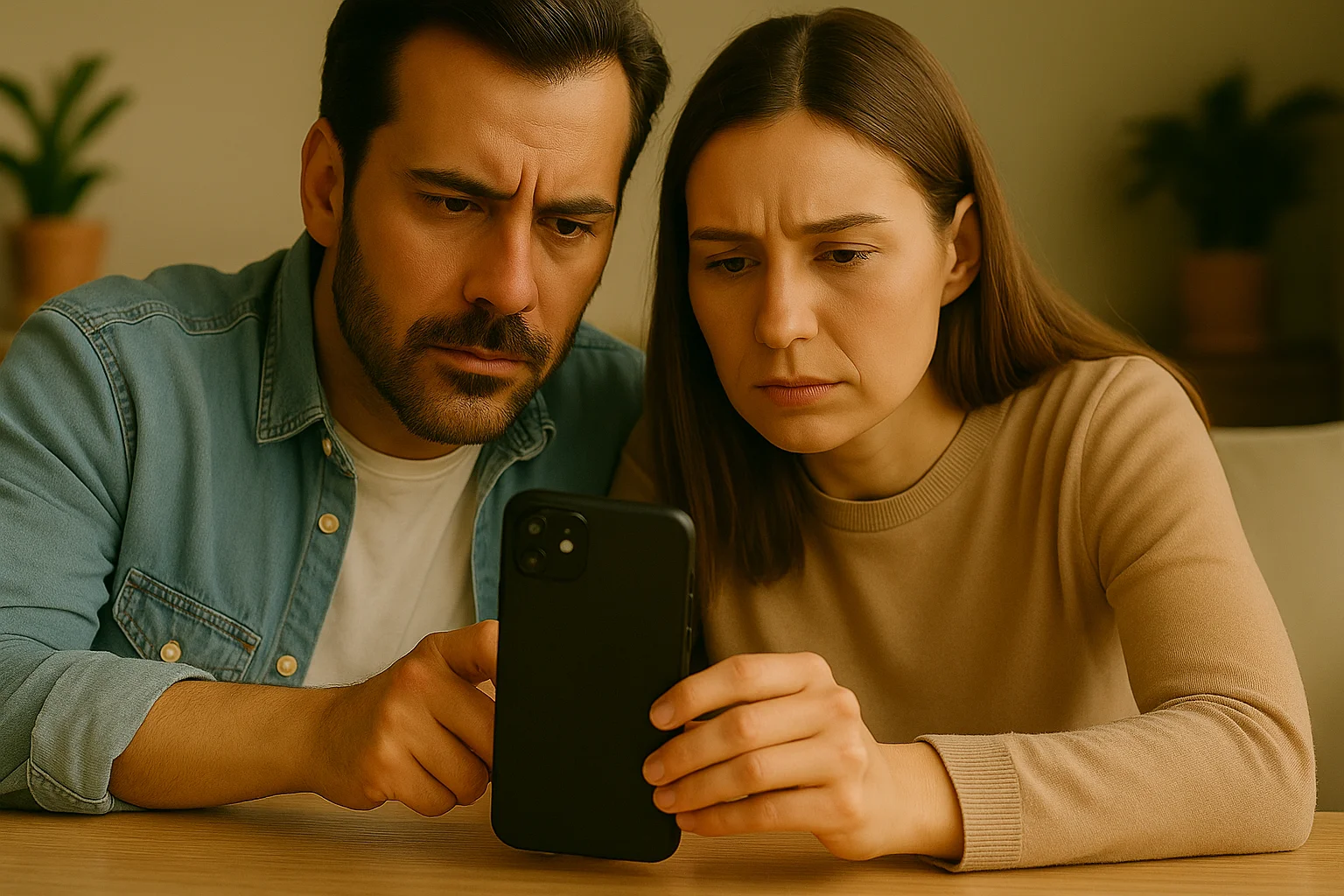If you’ve ever Googled “how to find a dead iPhone,” you are not alone. We’ve all been there — your iPhone suddenly vanishes, and to make matters worse, the battery is dead. It is that gut-punch moment where panic kicks in. Is it lost? Stolen? Or simply hiding between couch cushions with 0% battery? A dead iPhone might feel like the end of the road, but surprisingly, it doesn’t have to be. Even when powered off or completely drained, there are still ways to track down its last known location — if you act fast.
Today we are here to walk you through smart, reliable steps to increase your chances of recovering a dead iPhone. From Apple’s built-in features to tips that often go overlooked, you will learn what to do before and after your iPhone slips into the digital void.
Use the Last Known Location Before It Disappears
Even when your iPhone shuts off, it may leave behind digital breadcrumbs. That is thanks to Apple’s Find My iPhone system — one of the most powerful (yet underused) tools for recovering lost devices.
If you had Find My iPhone enabled before your phone died, you are in luck. This feature can show the last known GPS location your device sent before going offline. Here is how to access it:
- Go to iCloud.com and log in with your Apple ID.
- Open Find My iPhone.
- Select your device from the dropdown list.
If your iPhone was connected to the internet before it died — via Wi-Fi or cellular — it would have automatically updated its location. This location remains visible in your iCloud account for a limited time, that is why speed is key. The longer you wait, the greater the chance that location data expires or becomes irrelevant.
Also, if your phone had Send Last Location enabled in Settings → iCloud → Find My → Send Last Location, then your iPhone would automatically send its last GPS coordinates when the battery dropped to critically low levels. If you don’t have that setting on yet — now is a good time to turn it on for the future.
Another underrated tip? Use another Apple device, like a MacBook or iPad signed in to the same Apple ID, to open the Find My app. It offers the same features, and in some cases, it can sync location updates slightly faster than the web version.
In short, your iPhone may be “dead,” but its location history might still be very much alive — if you are quick about it.

When “Find My” Fails — Smart Backup Strategies That Work
Number Tracker: When Find My Isn’t Enough
Apple’s “Find My iPhone” works wonders — until it doesn’t. If your iPhone is powered off, out of signal range, or “Find My” was never enabled, you may find yourself staring at a blank map and a blinking cursor. This is exactly where Number Tracker steps in.
Number Tracker is an app primarily created for location sharing and family safety. What makes the app useful (in cases involving a dead iPhone) is its ability to store recent location data before the device went offline. If the person (or you) being tracked was sharing their location through the Number Tracker app, you will have access to the last known position, even if the phone has since gone dark.
This is a game-changer tool for parents keeping tabs on kids, couples on the go, or anyone worried about losing touch with a loved one. Unlike Apple’s system, which depends entirely on your iCloud setup, Number Tracker provides a standalone history of movement — even useful for looking back hours or days to retrace steps.
And here’s the kicker: Number Tracker doesn’t just help you find your phone. It helps you coordinate with someone else who might have lost theirs — whether it’s your child, your spouse, or even a friend who opted into sharing. But pay attention: the app is working precisely and reliably only in case it was installed and used on your phone before you’ve lost your device.
Unusual but Effective Ways to Retrace Your Steps
While tech tools are essential, sometimes old-school detective work can make all the difference. Here are a few non-obvious strategies that can help you recall and retrace your iPhone’s last known whereabouts:
- Check your call and message history: What was the last call you made? Where were you when you sent that final text? Your phone bill or messaging apps can jog your memory.
- Look at connected Wi-Fi history: Your home or work router might log the last time your device connected. This tiny clue can narrow down your timeline.
- Review push notifications: If you have email or bank apps on your Apple Watch or another synced device, check for recent alerts. A timestamp from a Starbucks receipt or Uber ride could provide a time and location.
- Call or visit the places you’ve been: Sounds obvious, but it works. Coffee shops, gyms, gas stations—many employees are used to finding phones and setting them aside.
- Mentally rewind your day: Think like a tracker. Where were you rushing? Where did you change clothes, carry groceries, or sit down for a moment? People often lose their phones during transitions or routine breaks.
When high-tech fails, low-tech intuition can still win the day.
What Definitely Doesn’t Work — And Might Make It Worse
When your iPhone is dead and missing, desperation can lead you down risky paths — dodgy apps, bad advice, or worse, misinformation disguised as tech support. In the table below you can see some of the most persistent myths floating around online — and show you what to do instead.
Myths vs. Reality: What Not to Believe
| Common Myth | Why It Doesn’t Work | What to Do Instead |
| “Install a tracker remotely to find your phone.” | Impossible. You can’t install apps on a device that’s offline or powered off. Remote installation only works if the phone is online and unlocked — and even then, only in rare cases with special configurations (like MDM on business phones). | Pre-install reliable tools like Find My iPhone or Number Tracker while your phone is still active. No app works retroactively. |
| “Bluetooth finds everything nearby.” | Not without paired devices. Bluetooth on a dead iPhone is off. Even when it is on, you’ll need a tracker like an AirTag to get pings via the Apple Find My Network. | Use AirTags or similar Bluetooth trackers before you lose your phone. They only work if set up in advance. |
| “A factory reset trick will show its last known location.” | Completely false. Resetting a phone wipes all location data — and unless you already have access to the phone, you can’t trigger a reset. Worse, this could compromise proof of ownership. | Never attempt a reset unless you’ve recovered the device physically and need to wipe it securely. |
| “Some third-party app can revive a dead battery remotely.” | Nope. That’s electrically impossible. A drained battery needs physical charging. No app can remotely “wake up” a powered-off phone. | If you recover the phone, connect it to a power source immediately. Then check Find My or tracking apps. |
| “Dark web services can track any iPhone for you.” | This is not just false — it’s dangerous and potentially illegal. Scammers prey on fear. You’ll lose money or personal data. | Stick to Apple-supported tools and trusted apps. If needed, report the phone lost or stolen via iCloud and your carrier. |
Believing in these myths doesn’t just waste time — it might delay real recovery efforts, give scammers access to your personal information, or cause you to lose data forever. In worst-case scenarios, trying risky tricks could even get your Apple ID locked or flagged for suspicious activity.

Stay Calm, Stay Smart
Losing a dead iPhone feels like the end — but it doesn’t have to be. With the right tools in place beforehand, quick thinking, and a dose of digital common sense, you still have a real chance to recover it. Skip the myths, trust the tech you’ve set up, and don’t underestimate the power of surrounding devices and smart tracking habits. And remember: in the world of lost phones, prevention isn’t just better than cure — it might be the only cure.



